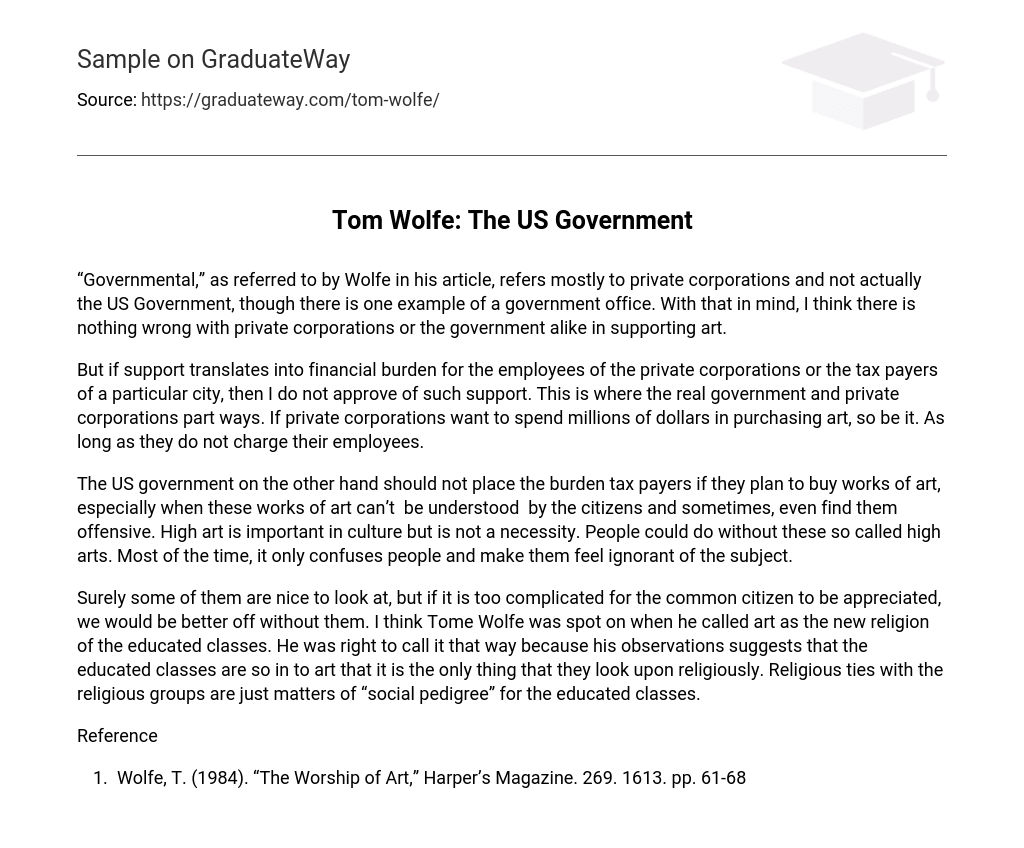“Governmental,” as referred to by Wolfe in his article, refers mostly to private corporations and not actually the US Government, though there is one example of a government office. With that in mind, I think there is nothing wrong with private corporations or the government alike in supporting art.
But if support translates into financial burden for the employees of the private corporations or the tax payers of a particular city, then I do not approve of such support. This is where the real government and private corporations part ways. If private corporations want to spend millions of dollars in purchasing art, so be it. As long as they do not charge their employees.
The US government on the other hand should not place the burden tax payers if they plan to buy works of art, especially when these works of art can’t be understood by the citizens and sometimes, even find them offensive. High art is important in culture but is not a necessity. People could do without these so called high arts. Most of the time, it only confuses people and make them feel ignorant of the subject.
Surely some of them are nice to look at, but if it is too complicated for the common citizen to be appreciated, we would be better off without them. I think Tome Wolfe was spot on when he called art as the new religion of the educated classes. He was right to call it that way because his observations suggests that the educated classes are so in to art that it is the only thing that they look upon religiously. Religious ties with the religious groups are just matters of “social pedigree” for the educated classes.
Reference
- Wolfe, T. (1984). “The Worship of Art,” Harper’s Magazine. 269. 1613. pp. 61-68





